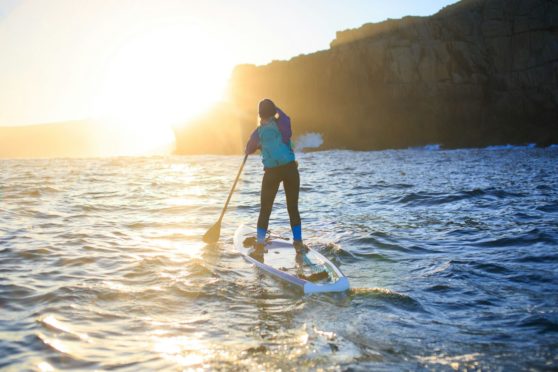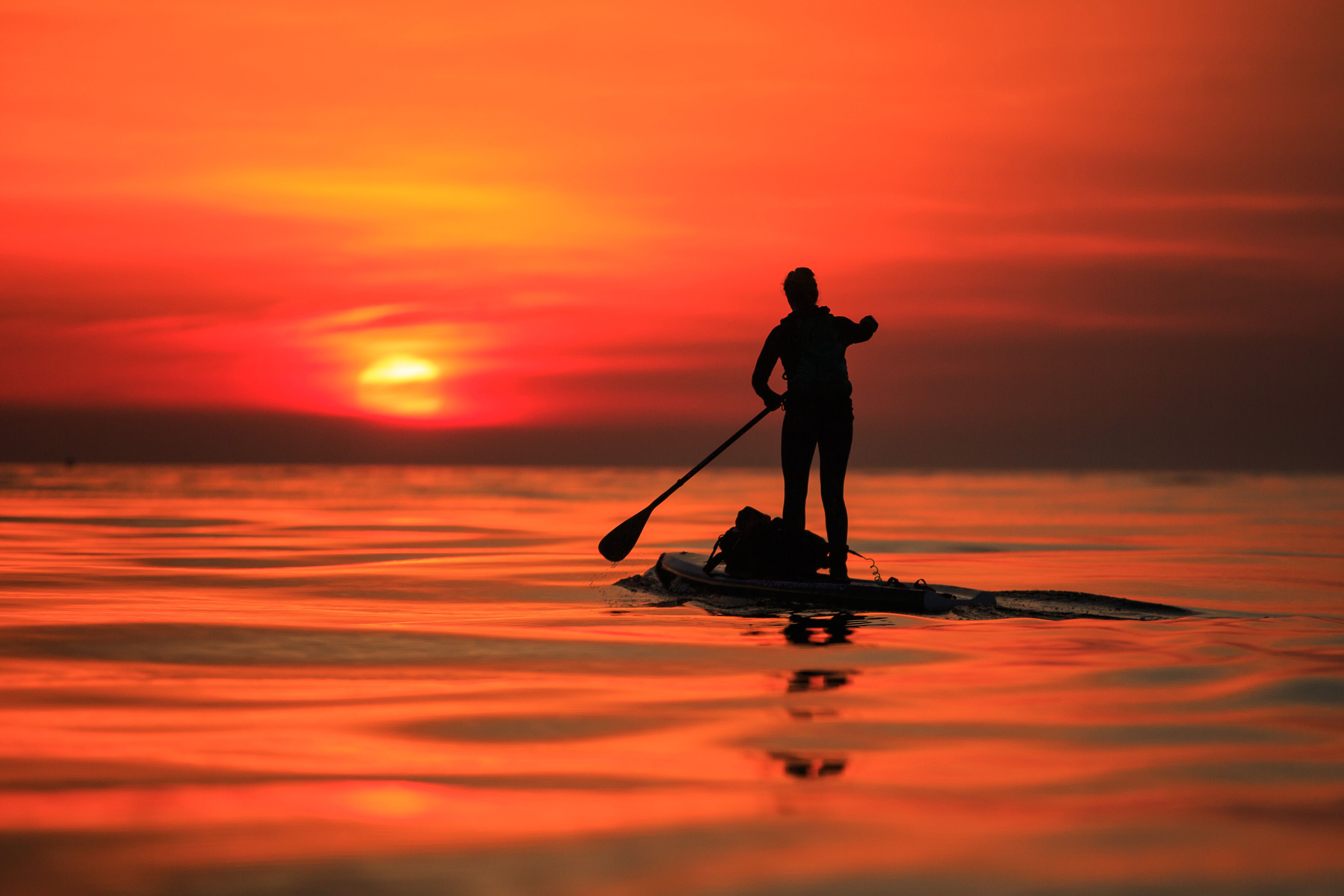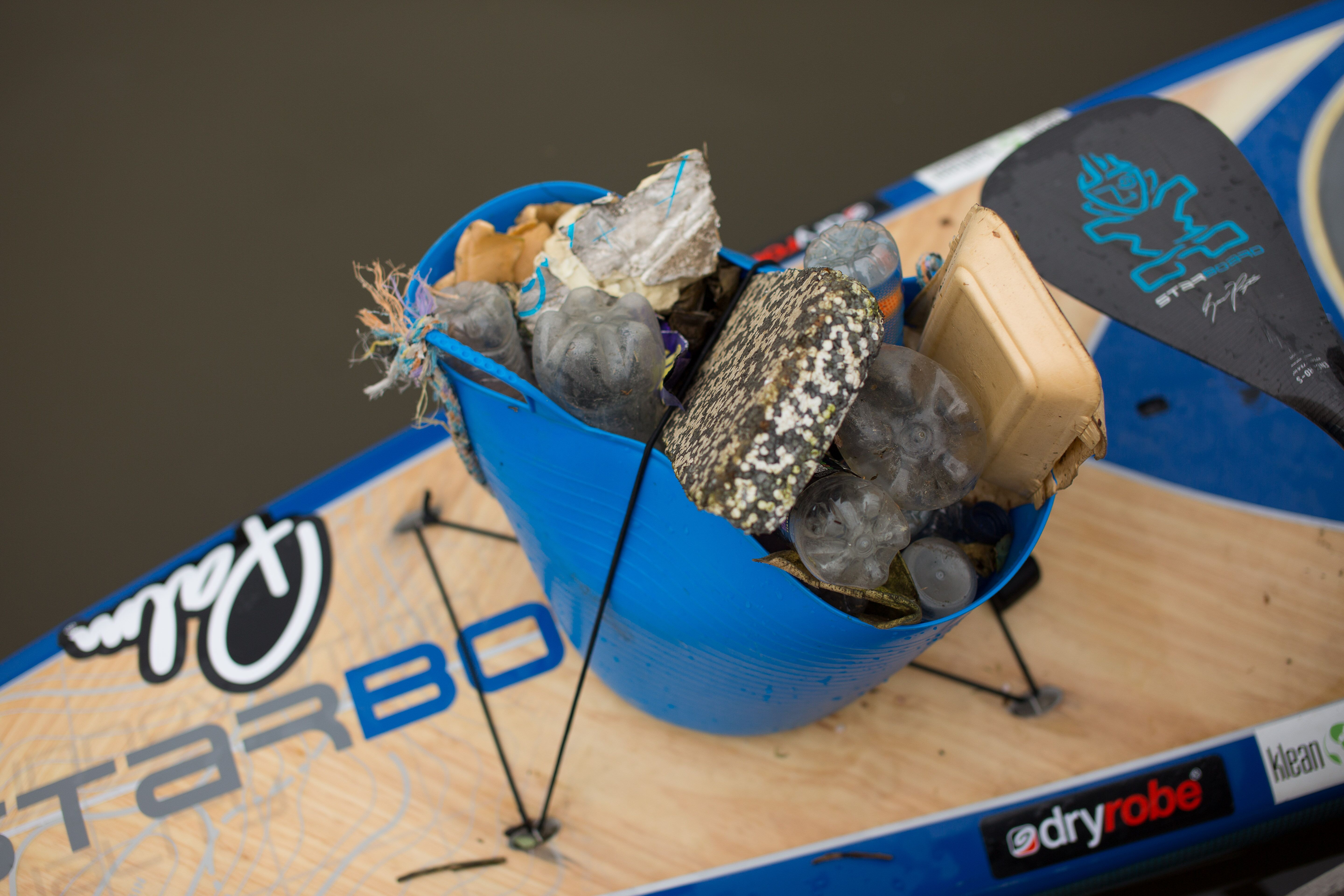
Cal Major’s paddle glides into the water for what must feel like the millionth time, as she passes through the Northern Highland’s Duncansby Head.
The 31-year-old has been paddling for almost two months, traversing nearly 1000 miles of ocean, rivers and canals, and her journey is nearly at an end. Her destination? John O’ Groats.
Her epic trip began at Lands End, where she first stood on her paddle board and embarked on what was to be an enduring journey of storms, huge waves, and endless, watery horizons, to the other far-reaching end of the UK.
But amidst the treacherous waters, the exhaustion, and the pressures to reach the end, Cal’s ultimate goal remained wholly positive – to raise awareness of the UK’s major marine plastic problem and inspire others to take action.
Vitamin Sea, a film currently touring the UK, tracks Cal’s record-breaking journey and explores positive solutions to plastic pollution; including the importance of community, connection to nature, and protecting well-being through time outside.
Here, we catch up with Cal, to find out more about her amazing journey, and why she cares so much about protecting our oceans.
How did your relationship with the sea and with marine conservation/fighting pollution begin?
I learnt to scuba dive on the Great Barrier Reef when I was 18 years old. I was blown away by the peace and joy I felt being underwater, and loved seeing all the animals and colours. I was hooked, and ever since have known that I wanted to dedicate my life and work to protecting the incredible underwater species and ecosystems.
I have been a keen surfer since a teenager too, and absolutely love my time in and around the water.
I believe everyone has their place in nature that they feel most at home – for me it’s the oceans.
I moved to Devon in 2014 and was horrified by the amount of plastic on the beaches every time I came out from a surf or a coastal exploration on my SUP. I needed to find a way to talk to people about it, and bring a positive solution to all the doom and gloom around the issue, so set out to stand up paddleboard the entire Cornish coast, highlighting how many plastic bottles there were on the beaches there, and asking people to commit to using a refillable water bottle instead of buying single use plastic bottles.

What made you decide to take on the journey from Land’s End to John O’Groats?
There’s a lot of doom and gloom around environmental crises, and I think the enormity of the issues can be quite paralysing when portrayed so negatively.
The beauty of the marine litter crisis is that there’s something each and every one of us can do to help alleviate it, and that’s not just with individual choices.
I wanted to highlight the positive stuff happening the length of the UK to tackle plastic pollution, in a bid to inspire further hope and action.
Why paddle boarding?
Nobody had ever done it before by stand up paddle boarding, and I had been looking at it for several years. When I first started looking at it I thought it was impossible to do, but through several other expeditions realised it was something I wanted to tackle.
People often ask why I don’t just kayak the routes I do, which would be much easier and less time-consuming! I love the point of view I get standing tall on my board, and feel much more free than I do when sat in a kayak.
I’m also able to see right down into the water from my vantage point, and see all the wildlife on offer – jellyfish, crabs, kelp forests – sometimes even seals and dolphins.
What was your route?
I set off from Sennen Harbour, paddled a mile South to be in line with the Land’s End signpost, then set off North again up the Cornish and North Devon coasts.
I paddled up the Bristol Channel, under the Severn Bridge, to Sharpness, where I began 2 weeks on the canals and rivers.
I wanted to use this to demonstrate that a great deal of plastic we find out to sea is coming from inland, and as such we all have a role we can play in positively affecting the marine litter crisis.
Once back out to sea near Blackpool, I paddled up the Cumbrian coast, around the Mull of Galloway, across to Arran, up the east coast of Arran, through the Crinan canal up to Fort William.
From there I paddled across the Caledonian Canal (Great Glen) to Inverness, up the North East coast of Scotland, around Duncansby Head, to John O’Groats.
What did you discover most on your journey?
The most profound lesson I learnt on my journey was how crucial a connection to our natural world is in driving a desire to protect it.
The lengths people were willing to go to in coastal communities that cared about their environment, to look after it, filled me with hope that if we can reconnect more of our society to nature.
The endurance side of things was a real challenge. I found the canals more challenging than the ocean in many ways, because even though they didn’t carry the same dangers, from tides, wind, waves and cliffs, there was nothing to fight against or to push me to keep going.
On the ocean I had very specific tidal windows each day that I could paddle, which meant I had to push hard to make it to my destination before the tide turned. I also had to get to that destination, or at least to suitable dry land, each day, which kept me pushing forward even when exhausted and sore.
What were the positives from the journey?
There were so many positives! I met some truly lovely people, many of which I had never met before, and some of whom took me in as a friend, gave me food and accommodation, and helped get me back on my way.
The kindness I experienced from strangers, who I now call my friends, was truly touching.
I also found hope in many communities who were as passionate as I am to look after their little pockets of nature. So many positive stories of action to protect our natural world, that I hope will inspire others to follow suit.
Did you uncover a lot of pollution on the route? If so where was it most concentrated?
In 2014 I paddled around the whole Cornish coast, and I must say that compared to that expedition, there was noticeably less plastic on the beaches I was paddling into; even the more remote beaches.
I think this is thanks to hugely increased awareness, and more people picking up plastic when they go to the beach, and regular community beach cleans. It’s great to see that action is having an effect.
I found a lot of plastic particularly on the West coast of Scotland, where tides and winds mean a lot washes up onto rocky beaches. A lot of the beaches are really hard to get to by land, so it just accumulates over time.
What were the most difficult aspects of the journey? Any really hairy moments?
The hairiest moments were rounding the Mull of Galloway, and crossing to Arran.
The Mull of Galloway was particularly tricky as nine tides meet there, and it’s very exposed to wind, so timing has to be absolutely precise
Paddling in the dark, for over eight hours, with only a lighthouse flashing every 30 seconds and a GPS watch to navigate by, was absolutely terrifying.
Crossing to Arran was tricky, as half way across, ten miles from the nearest land in any direction, a storm came in, and I was faced with very large waves and a real fight on my hands to get to Arran with the direction of the wind.
I fought hard, and arrived onto Arran drenched in sweat, wobbly and exhausted. It was also a terrifying 8 hours, but exhilarating once I knew I was safe.

Enjoy the convenience of having The Sunday Post delivered as a digital ePaper straight to your smartphone, tablet or computer.
Subscribe for only £5.49 a month and enjoy all the benefits of the printed paper as a digital replica.
Subscribe © James Appleton
© James Appleton